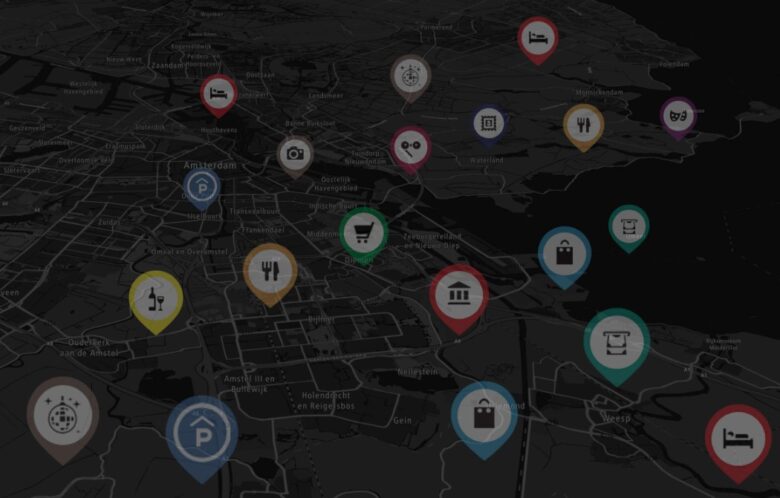API Geocoding plays a pivotal role in modern real estate platforms by enhancing user experience and enabling precise location-based services.
Firstly, it streamlines property search, allowing users to find listings based on specific locations, neighborhoods, or even proximity to amenities like schools and hospitals. This level of detail helps prospective buyers make informed decisions.
Moreover, Geocoding API aids in geospatial analysis, empowering real estate professionals to assess market trends, property values, and demographic data for targeted marketing. This data-driven approach enhances strategic decision-making and investment opportunities.
Additionally, API Geocoding assists in automating tasks like property valuation, reducing manual work and minimizing errors. It also supports geofencing for personalized alerts, notifying users when new properties matching their criteria become available in their preferred areas.
Furthermore, Geocoding API fosters transparency by providing accurate property location information, reducing the likelihood of misunderstandings between buyers, sellers, and real estate agents.
API Geocoding is a fundamental tool in the contemporary real estate landscape, enabling efficient property search, data-driven decision-making, automation, and enhanced transparency. Its influence on the industry is set to grow as technology continues to shape the future of real estate.
Contents
Property Search and Localization

Source: martinworkshard.tech
The first and foremost benefit of API Geocoding is it aids in property search and localization. Real estate platforms thrive on the ability to provide accurate and localized property data to their users. It’s not just about listing properties; it’s about pinpointing their exact geographical location. This is where API Geocoding comes into play.
The use of API Geocoding allows users to search for properties in specific locations, narrowing down their search to the exact street, neighborhood, or city of interest.
This significantly cuts down the time and effort required in finding a suitable property. Moreover, API Geocoding also enhances the user experience by providing visual representation of the property’s location on a map, making the property search process more intuitive and interactive.
Further, API Geocoding can also help in estimating the distance between different properties, or between a property and certain landmarks or amenities.
This can be an invaluable tool for potential buyers or renters who prioritize location when choosing a property. Whether it’s proximity to a school, workplace, or shopping center, API Geocoding can provide accurate and relevant information to aid in decision making.
Market Trend Analysis
The second major advantage of API Geocoding in real estate platforms is in the area of market trend analysis. Understanding market trends is critical for both real estate professionals and potential buyers or investors. API Geocoding can provide valuable insights into these trends by analyzing the geographical data of property listings.
By converting address data into geographical coordinates, API Geocoding allows for a visual representation of market activity.
It can illustrate where properties are being listed or sold, identify hotspots of activity, and highlight areas of growth or decline. This can help real estate professionals to understand where demand is high or low, and adjust their strategies accordingly.
Moreover, API Geocoding can also aid in predicting future market trends. By analyzing past and present geographical data, patterns can be identified that may indicate future developments. This can be a powerful tool for investors and developers looking to make strategic decisions based on anticipated market changes.
Geofencing and Proximity Searches

Source: inc.com
Another significant application of API Geocoding in real estate platforms is in the creation of geofences and conducting proximity searches.
Geofencing is a technology that defines a virtual boundary around a real-world geographical area. In the context of real estate, this can be used to alert users when a new property listing falls within their specified area of interest.
API Geocoding is instrumental in creating these geofences. By converting property addresses into geographical coordinates, it allows real estate platforms to define the boundaries of the geofence accurately.
This provides users with timely and relevant notifications, enhancing their property search experience.
In addition, API Geocoding also facilitates proximity searches. This feature allows users to search for properties within a certain radius of a specific location. Whether it’s near their workplace, their child’s school, or a favorite park, proximity searches enable users to find properties in their preferred location with ease.
Furthermore, the versatility of API Geocoding extends beyond real estate. Various industries, such as retail, logistics, and marketing, harness its power for location-based services. For retailers, geofencing can send targeted promotions to customers when they enter a store’s vicinity, driving sales and enhancing customer engagement.
In logistics, geofencing helps track shipments and vehicles, ensuring efficient route planning and delivery management. It aids in optimizing supply chain operations, reducing costs, and improving customer satisfaction.
Moreover, marketing professionals leverage proximity searches to target potential customers more effectively. By identifying users’ proximity to specific points of interest, they can deliver tailored advertisements and promotions, increasing conversion rates.
API Geocoding’s integration with IoT devices and mobile apps further extends its applicability. It enables smart homes to automate tasks based on users’ location and preferences, enhancing convenience and energy efficiency.
API Geocoding plays a pivotal role in modern technology, transforming various sectors through geofencing and proximity searches, enriching user experiences, and optimizing operational efficiency. Its potential continues to grow as businesses innovate and harness the power of location-based data.
Enhancing Property Listings with Location Data
Finally, API Geocoding can significantly enhance property listings with location data. Detailed and accurate location information is a key factor that potential buyers or renters consider when looking at property listings.
API Geocoding allows real estate platforms to provide this information in a comprehensive and user-friendly manner.
By converting property addresses into geographical coordinates, API Geocoding enables the display of the property location on a map. This gives users a visual representation of the property’s location, helping them understand its proximity to various landmarks and amenities.
Moreover, it can also provide information on the neighborhood, such as the average property prices, crime rates, and school ratings, further adding value to the property listings.
Additionally, API Geocoding can also help in enhancing the SEO of property listings. By including detailed location information in the listing, it can improve the visibility of the listing on search engines, thereby attracting more potential buyers or renters.
Conclusion

Source: developer.tomtom.com
In conclusion, API Geocoding plays a crucial role in real estate platforms.
From aiding in property search and localization, to enabling market trend analysis, to facilitating geofencing and proximity searches, and enhancing property listings with location data, the benefits of API Geocoding are manifold.
In an industry where location is everything, leveraging the power of API Geocoding can significantly enhance the efficiency and effectiveness of real estate platforms.
